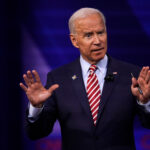In a move poised to reshape the U.S. video and wireless industries, DIRECTV and EchoStar (NASDAQ: SATS) announced today that they have entered a definitive agreement for DIRECTV to acquire EchoStar’s video distribution business, DISH DBS, which includes DISH TV and Sling TV. The acquisition, structured as a debt exchange transaction, is expected to bring greater competition to the video market and enhance EchoStar’s financial profile as it continues to deploy its nationwide 5G Open RAN wireless network.
Transforming the U.S. Video Landscape
As the video distribution industry increasingly shifts towards streaming services dominated by large tech companies, this merger is expected to deliver more choices and better value for U.S. consumers. DIRECTV and DISH, longtime competitors in the satellite TV space, have faced declining subscriber numbers as more Americans turn to streaming platforms. By combining forces, DIRECTV plans to leverage its larger scale to work with content programmers and provide smaller, more affordable content packages.
“With this acquisition, we will be better equipped to tailor content for our customers, making it more accessible and affordable,” said Bill Morrow, CEO of DIRECTV. “This move reinforces our commitment to innovation and delivering high-quality services in a highly competitive video market.”
Improved Consumer Experience and Expanded Choices
The newly merged DIRECTV and DISH are expected to bring multiple content sources together, offering consumers a more streamlined and accessible video experience. By bundling content more effectively, the combined company will be able to offer smaller, flexible packages at lower price points—directly challenging the dominance of large streaming platforms. This will also benefit content creators, enabling a more diverse range of voices to reach viewers via pay TV.
EchoStar’s Enhanced Focus on 5G Wireless
For EchoStar, the transaction offers the opportunity to focus more heavily on its 5G Open RAN cloud-native wireless network. Hamid Akhavan, EchoStar’s CEO, highlighted the advantages this shift will bring: “With improved financial flexibility, we can accelerate the deployment of our nationwide 5G network, offering U.S. consumers more options and driving faster innovation in the wireless space.”
EchoStar, which also operates Boost Mobile, plans to strengthen its position as a key competitor in the U.S. wireless industry, using its satellite assets to develop innovative direct-to-device (D2D) solutions.
Financial Impact and Synergies
The transaction is expected to significantly improve the financial profiles of both companies. For DIRECTV, the acquisition strengthens its capital structure, with a projected leverage ratio just over 2.0x post-transaction, and the potential for $1 billion in cost synergies by the third year following the deal’s closing, anticipated in late 2025.
EchoStar, on the other hand, will benefit from the alleviation of financial constraints, including the reduction of approximately $11.7 billion in debt. The company’s focus will shift towards its 5G network, enabling greater operational flexibility and opening up new strategic opportunities.
Leadership and Corporate Structure
Upon closing, DIRECTV will be led by Bill Morrow as CEO and Ray Carpenter as CFO. The combined company will be headquartered in El Segundo, California. EchoStar will continue to focus on its wireless services, with a stronger financial base to support growth and innovation.
For more details, visit BrighterTVFuture.com, where additional information and updates about the transaction will be posted.
This acquisition marks a significant moment in the U.S. video and wireless industries, with the combined forces of DIRECTV and DISH set to offer more consumer-friendly services while positioning EchoStar for future growth in the wireless market. As traditional pay TV continues to decline, the reshaped video landscape will offer new opportunities and challenges for both consumers and providers alike.





